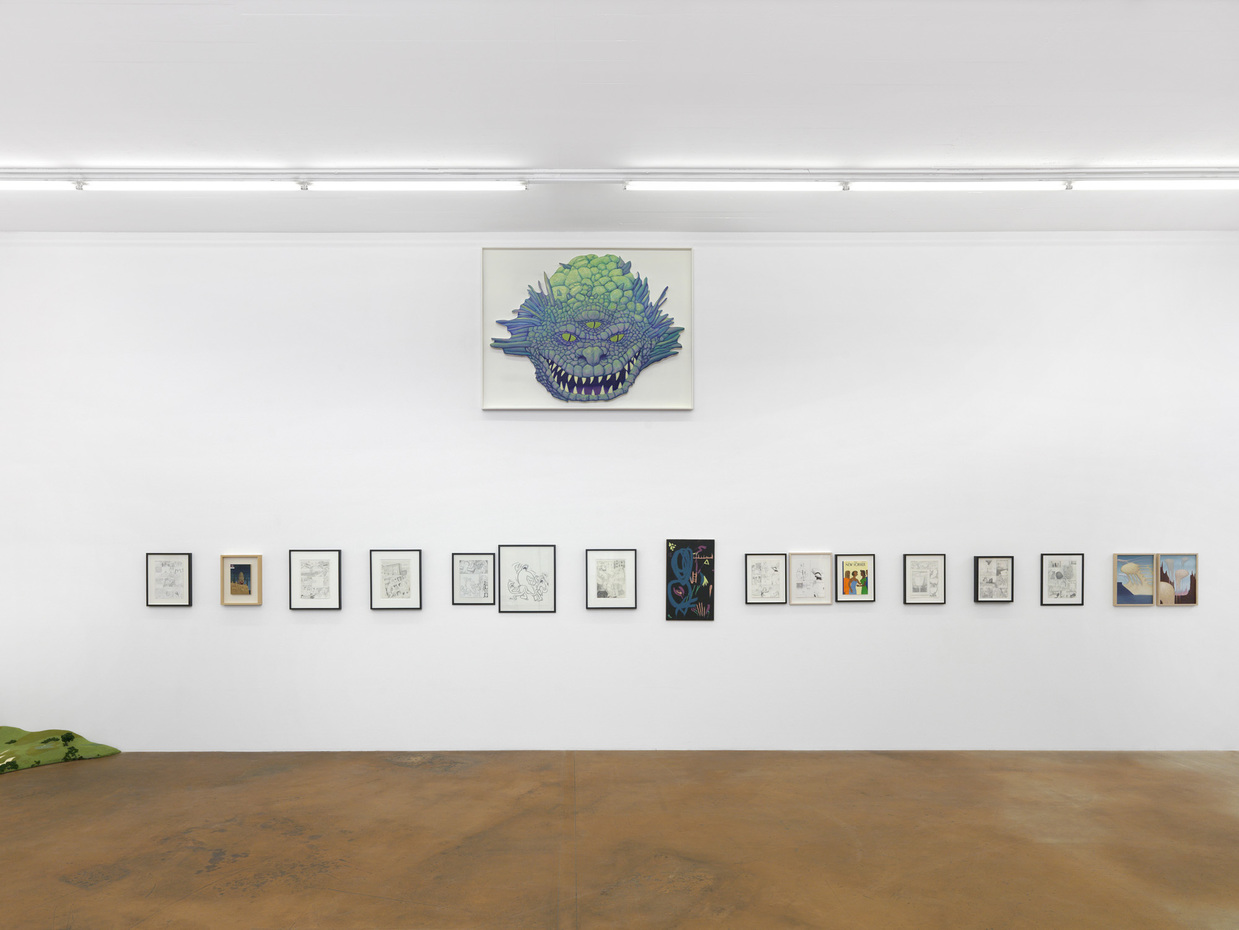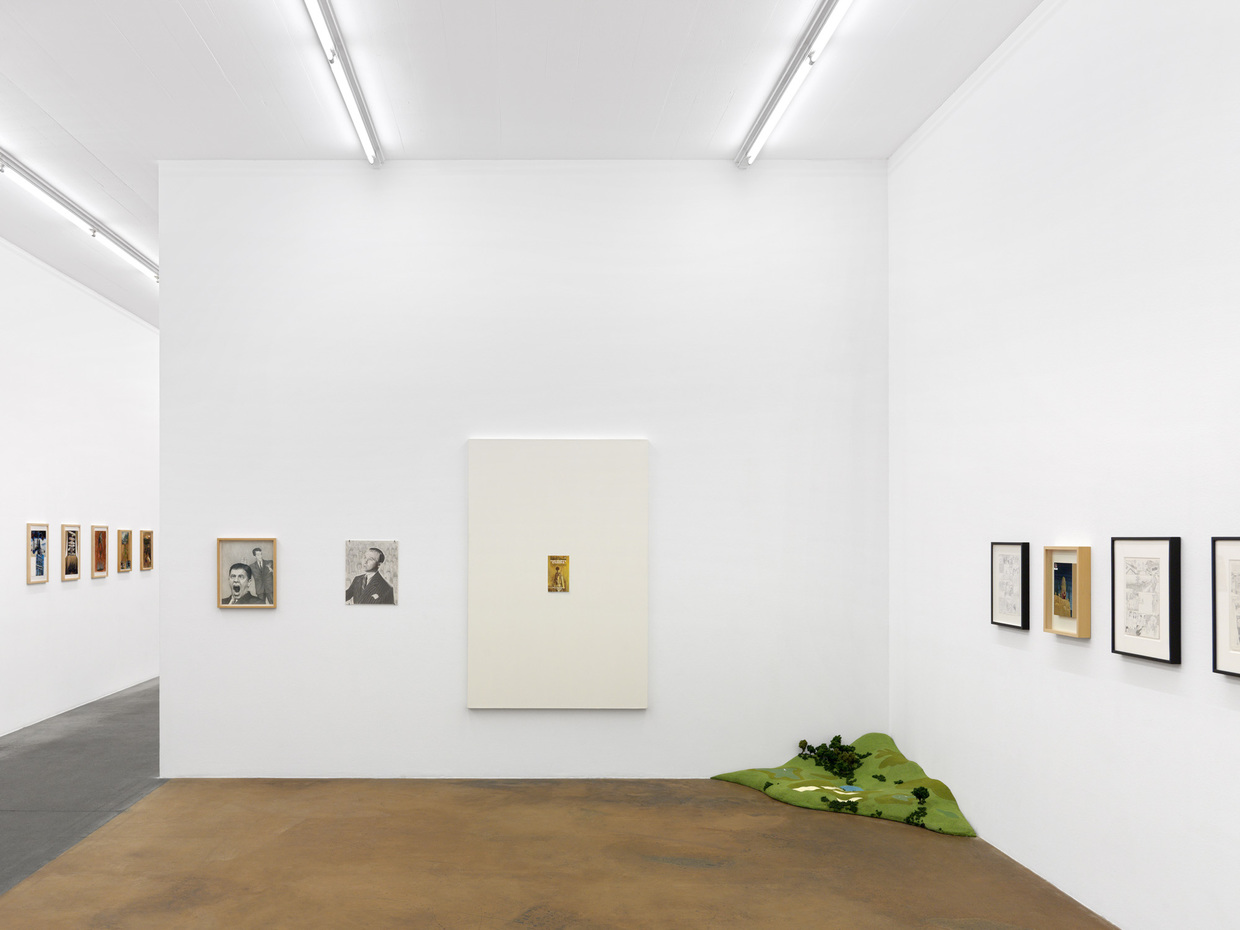This exhibition gathered works from two early series by Jim Shaw (b. 1953), an artist active in the Los Angeles scene since the early 1980s. My Mirage (1986–1990), is a body of 170 interconnected works, each drawn, painted, silkscreened, photographed, written, sculpted, animated, or filmed in different styles. Structured as a multi-chaptered Bildungsroman, each piece of My Mirage reworks an image culled from an extremely broad iconographic field, ranging from Conceptual art all the way to thrift store paintings, and includes pretty much everything in between: children’s illustrated literature, comics, national news magazines and small-town local papers, psychedelic concert posters, high school yearbooks, etc. It tells part of the story of a character named “Billy,” a white middle-class American lost in the maelstrom of the 1960s and 1970s. His is a tale of unceasing failure, a futile quest for innocence and meaning. We first meet Billy as an anxious child eager to understand the world that surrounds him. As the narrative progresses, we see him struggle with the guilt-wracked spasms of adolescence, only to lose himself in a psychedelic utopia that rapidly becomes a nightmare. In the depths of his psychotic hallucinations, he follows a woman he worships into a pagan cult before finally returning to the religion of his youth, “reborn” as a fundamentalist Christian.
The other series, Dream (1991–2003) is comprised of two interrelated bodies of work: the Dream Drawings take the form of a comic book page, in which the artist illustrates his dreams and the plethora of composite objects he encounters on his path as he journeys through Slumberland; and the Dream Objects, which are 3D realizations of these chimeras. If these works seem to be the product of hallucinations, they are nevertheless foreign to the heritage of European Surrealism. There is no intent here to unveil the inner states of the soul or psyche. For Shaw, dreams are treated above all as a kind of amalgamation machine. Each of these works is an aggregate of heterogeneous sources, moments of personal histories and fragments of collective cultural history. Radically non-psychoanalytical, these rewrite the subject of History from the perspective of the artist—a white, middle-class and middle-aged American living in the last decade of the twentieth century, a time when the aspirations of the counterculture became naturalized. Dream Objects thus become props of a morality play, in the shadow of which we continue to stand.
- The exhibition was organized by Lionel Bovier, with works coming from MAMCO’s collection and Geneva-based collectors



